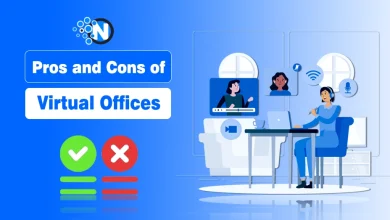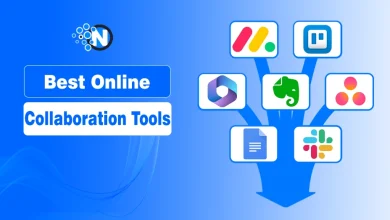
Tradition means passwords and login will be obsolete soon. The need to eliminate passwords in logins has come to an end.
No matter, how complex is the password, the latest innovative approaches to cyber threats have made it possible for – any password with little effort can be hacked or cracked.
So, here I am, moving towards further discussing Passwordless authentication and its benefits for businesses that have adopted it.
Critical Stats About the Passwords
1. In 2022, Over 24 billion passwords will be exposed by hackers.
2. More than 80% of password breaches are related to weak, stolen and reused passwords.
3. Users who don’t use password managers have three times more chances to be affected by breaches. (Security.org, 2023)
4. Almost 60% of users change their passwords after learning about any unauthorized access.
It almost takes 10-14 seconds to type any account password.
5. The most commonly used passwords are”123456, 123456789, QWERTY, Password, 12345, 12345678, 111111, I love you. (Reader’s Digest)
6. Adding special characters to your passwords can take time for the hacker to crack your password. (Digital Shadows, 2022)
7. Workforce Authentication Report revealed that 92% of businesses have planned to move into a Passwordless experience. (FIDO Alliance, 2023)
Limitations of Plain-text Passwords
The Plaintext passwords are now facing a lot of breaches for users, companies and even large-scale organizations.
There is always a question – whether it’s a safe practice or not. As I mentioned above Plain text passwords that are not encrypted and are readable by humans. Instead of all these, multiple other things are also hurdling the way towards the authenticity of the passwords.
Lack of Secrecy
How it happens? I surveyed 26 managers of Tech companies in my surroundings and what I found was incredible. Only 5 had their passwords on hard copies, while 21 have adopted online means of saving passwords i.e. Google Sheets, Google Docs, and Third-party password managers like Proton and LastPass.
What am I concluding here? As the majority of organizations are saving their passwords online, there is less account confidentiality. In case of any security breach, these can be exposed for not having a protection layer.
Weak Passwords
Most of the users are intended to use similar passwords for all of their services to make guesses easier. Reports signified that two-thirds of US Americans use the same passwords for multiple accounts, and overall, 30% use the same passwords for all of their services.
Most importantly, from these, almost 59% use their name figures, birthdays and phone numbers as their passwords.
Such passwords are easily crackable and are always at higher risk of data breaches. Such people are always vulnerable to data breaches of passwords from hackers who intend to hack their passwords.
Password Fatigue
Password fatigue is a constant feeling of stress and anxiety when you are unable to remember and manage the passwords of your multiple accounts. It occurs for various reasons – especially when you have similar passwords with slight changes on different accounts or when you are using a password manager where you did not update this.
It also happens when you have complex passwords –and have not saved them anywhere. In addition, you are opting for common passwords, storing all passwords in one place, sharing passwords, and reusing passwords often exposed to cyber-attacks.
User Experience Issues
It mostly happens when you have similar passwords with little change for different platforms – get stuck in remembering a specific site’s password. When you consistently try to remind or put incorrect passwords, you skip the website as it is harming your user experience.
Businesses that are providing this facility are also losing customers as customers are unable to get back to their buying accounts.
Understanding Passwordless Authentication
Passwordless Authentication is a process of logging into a service without using a textual password. Users who have the privilege of this service can log in to a service with a unique security token, Multi-Factor Authentication (MFA), OAuth and Single Sign-On (SSO), Magic Links, Biometrics or One-Time Passwords (OTPs).
The adaptation to this service has lessened the challenges of storing passwords and enhanced the overall user experience for reducing the IT operations complexity and cost. Furtherly, the Passwordless authentication is divided into three major factors,
- Inherence Factors
- Possession Factors
- Knowledge Factors
Benefits of Passwordless Authentication
Why is Passwordless authentication necessary? Why are they better performers? To answer such questions, I have developed a list of the benefits of passwordless authentication in the below section.
Time Effective
Once, a sage said, “Time is the wisest counsellor of all”. The same is the case with Passwordless authentication in modern life.
According to the World Economic Forum, an average person spends almost 12.6 minutes per week and 10.9 hours per year resetting his passwords for different services. It further causes many disruptions in the business operations. Passwordless Authentication does not require a text password, so it saves time searching or remembering the password.
Get Rid of Remembering Passwords
Remembering passwords is a common issue with traditional text-based passwords. You have to enter the password to access a website or service. Passwordless authentication has brought innovation to this headache while introducing alternatives to traditional passwords.
Multiple Ways
A major concern with traditional passwords was their bounding nature. If you forget a password, there is only one solution to reset it.
However, if I talk about Passwordless authentication, there are multiple ways to verify your identity, i.e., biometric, OTP, MFA, and SSO, within seconds. As you don’t have to reset and change passwords again and again.
Improved Scalability
Passwordless authentication fits every size and kind of organization. Traditional passwords are not compatible with every type of business. For a scalable and pleasing experience, Passwordless verification methods are better in all aspects.
User Experience
It is also observed that the businesses facilitating the user’s worth Passwordless authentication have a higher rate of customer retention than those who don’t have. Passwordless measures do not require enough logging details, so UX remains safe, and the overall rate of visitors increases.
Final Lines
Here I am concluding it! This was all that strongly argued about the domination of Passwordless authentication in the future. It will bring a great revolution into the security field in the futuristic world.
I can estimate that 95% of companies will adopt passwordless authentication by 2027, as multiple companies are quickly transforming into a Passwordless world. That’s why! Businesses can dive into this secure and compliance-friendly way while giving users a great user experience.




